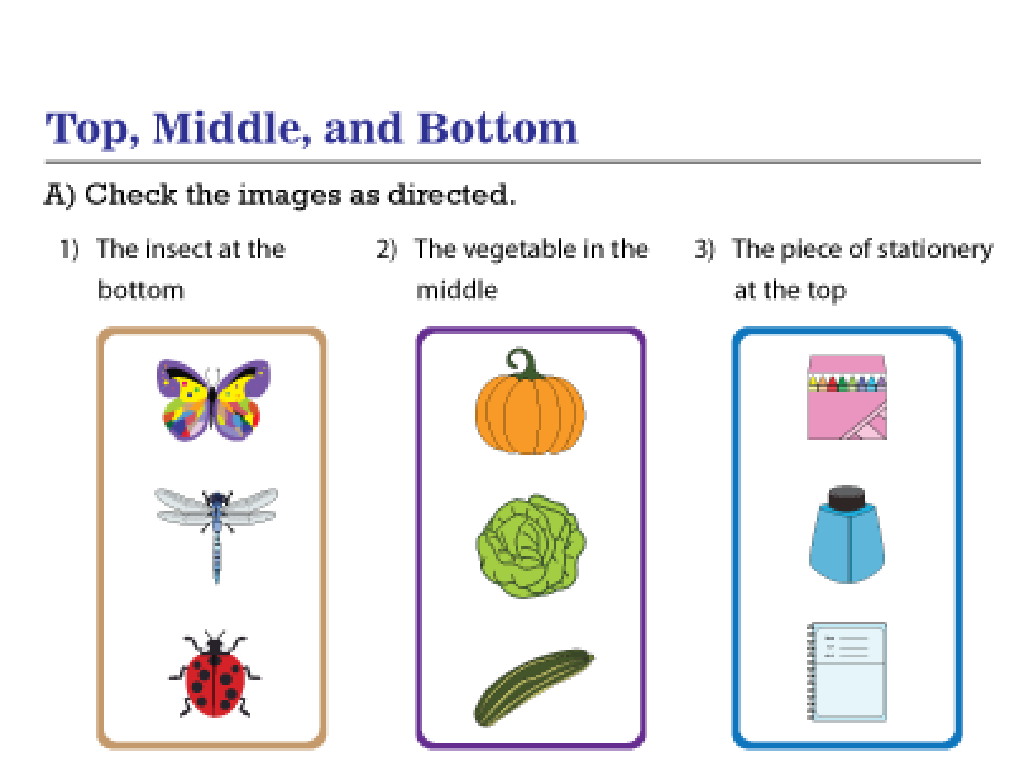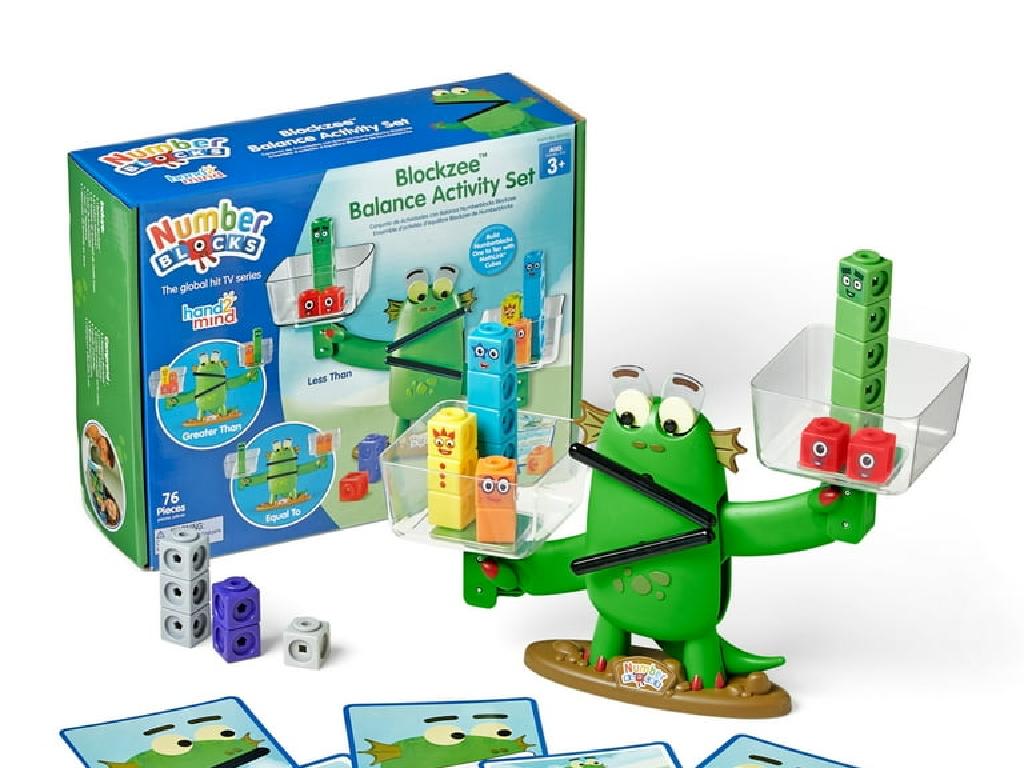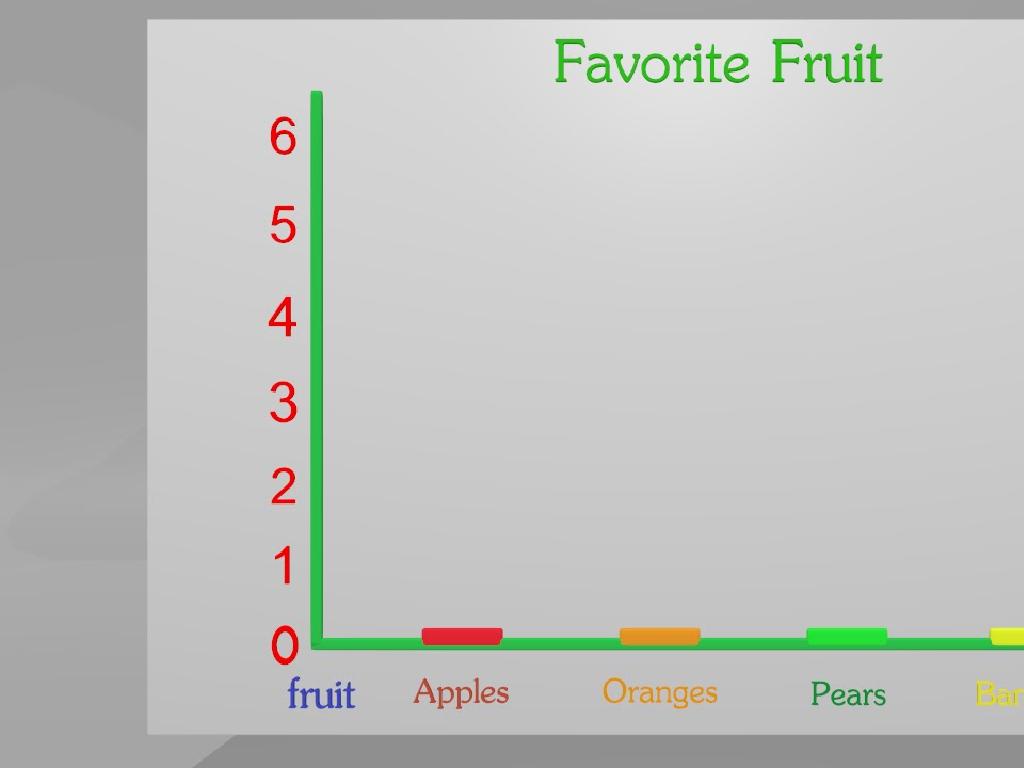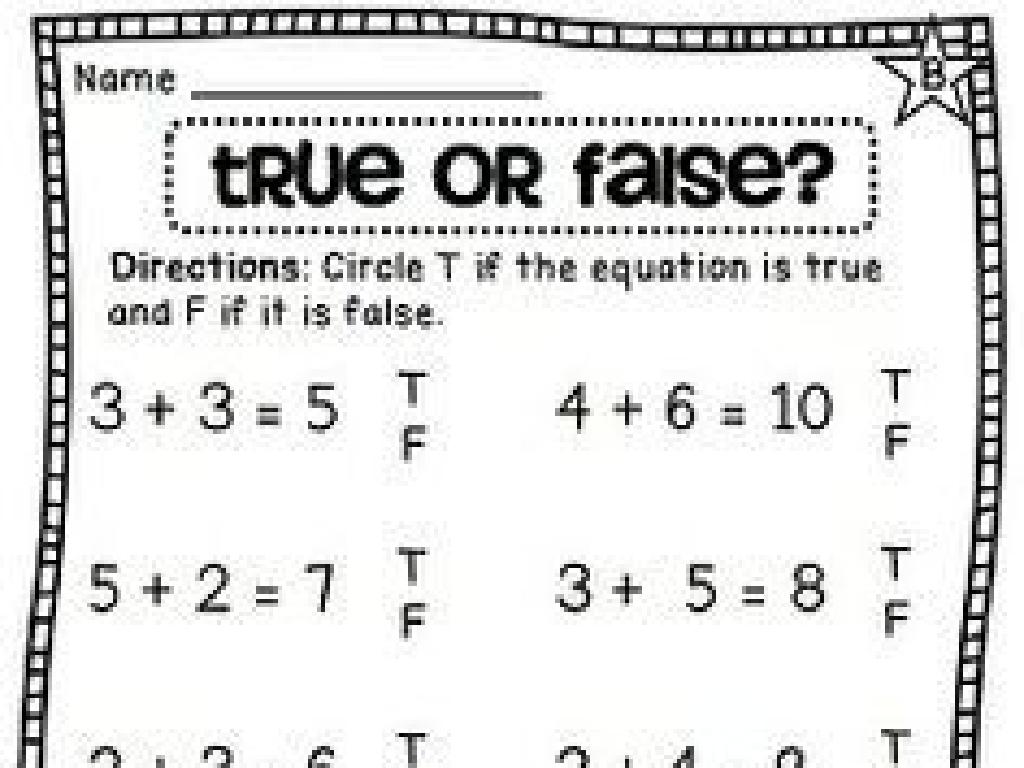Which Definition Matches The Sentence?
Subject: Language arts
Grade: Sixth grade
Topic: Homophones
Please LOG IN to download the presentation. Access is available to registered users only.
View More Content
Welcome to Homophones!
– Understanding Homophones
– Words that sound the same but have different meanings and spellings
– Defining Homophones
– They are pronounced the same but differ in meaning, like ‘to’, ‘two’, and ‘too’
– Examples of Homophones
– ‘Flour’ (ingredient) and ‘flower’ (plant), ‘sea’ (body of water) and ‘see’ (to view)
– Usage in sentences
– How to choose the right homophone based on sentence context
|
This slide introduces students to the concept of homophones, which are words that sound alike but have different meanings and often different spellings. It’s crucial for students to recognize homophones to avoid confusion in both writing and reading. Provide clear definitions and engage the class with common examples, ensuring they understand the distinction. Encourage students to come up with their own examples and use them in sentences, which will help solidify their understanding of how context determines the correct homophone to use.
Exploring Homophones
– Homophones: Same sound, different meanings
– Words like ‘to’, ‘two’, and ‘too’ sound alike but differ in meaning and use.
– Different spellings may apply
– ‘Their’, ‘there’, and ‘they re’ show how spelling changes the word’s role.
– Understanding homophones is crucial
– Knowing homophones avoids confusion in communication.
– Enhances reading and writing skills
– Correct usage of homophones reflects well on literacy and prevents misunderstandings.
|
Homophones are words that are pronounced the same but differ in meaning, and sometimes spelling, such as ‘flower’ and ‘flour’. It’s important for students to learn homophones to avoid confusion when writing and speaking. Understanding these can enhance their reading comprehension and writing clarity. During the lesson, emphasize the context in which these words are used through examples and exercises. Encourage students to create sentences using homophones to demonstrate their understanding. This will also prepare them for identifying correct definitions in sentences, a key skill in language arts.
Homophones: Matching Definitions to Sentences
– ‘Pair’ vs. ‘pear’
– ‘Pair’ means two items, ‘pear’ is a fruit.
– ‘Flour’ vs. ‘flower’
– ‘Flour’ is for baking, ‘flower’ is a plant.
– Sentence usage of ‘pair’
– ‘I have a pair of shoes.’
– Sentence usage of ‘flour’
– ‘We need more flour for the recipe.’
|
This slide introduces students to homophones, words that sound the same but have different meanings and spellings. ‘Pair’ and ‘pear’ are used to show how context is key to understanding which word fits in a sentence. Similarly, ‘flour’ and ‘flower’ demonstrate the importance of context. Have students create sentences using these homophones to reinforce their understanding. Encourage them to think about the meaning of each word and how it fits into the sentence. This activity will help them distinguish between homophones in their writing and reading.
Homophones: Matching Definitions to Sentences
– Carefully read each sentence
– Use context to find the right homophone
– Context clues are hints that reveal which ‘sound-alike’ word fits
– Practice with sample sentences
– ‘Their dog loves chasing its tail’ vs. ‘They’re going to the park’
– Understand homophones in context
– Recognize how homophones change the meaning despite sounding the same
|
This slide is aimed at helping students understand the concept of homophones words that sound the same but have different meanings and spellings. Students should be encouraged to read sentences attentively to grasp the context, which is crucial for choosing the correct homophone. Provide practice with clear examples, highlighting how the meaning of a sentence can change with different homophones. Encourage students to come up with their own sentences using homophones to reinforce their learning. In the next class, review these concepts and have students share their examples, fostering a deeper understanding and application of homophones in their writing.
Class Activity: Homophone Hunt
– Find homophone pairs in word search
– Write sentences with homophones
– Use each homophone in a context that reflects its meaning
– Share your sentences with the class
– Discuss the different meanings
– Explain how the homophones sound the same but have different meanings
|
This activity is designed to help students recognize and understand homophones words that sound the same but have different meanings and spellings. Provide a word search puzzle with various homophones hidden within it. Once students find a pair, they should write sentences that correctly use each homophone in context. After writing their sentences, students will share them with the class, which will reinforce their understanding and provide an opportunity for peer learning. As a teacher, facilitate discussion on the different meanings of each homophone pair. Possible homophone pairs to include in the word search could be: ‘pair’ and ‘pear’, ‘flour’ and ‘flower’, ‘sea’ and ‘see’. This will enhance their vocabulary and spelling skills in a fun and interactive way.
Homophones Game: Matching Definitions
– Match homophones to definitions
– Homophones sound the same but have different meanings, e.g., ‘flower’ and ‘flour’.
– Pair up or form small groups
– Discuss your matching choices
– Share thoughts on why a particular definition fits the homophone.
– Explain reasoning behind matches
– Understanding context helps determine the correct meaning.
|
This interactive game is designed to help students understand homophones words that sound the same but have different meanings and spellings. By working in pairs or small groups, students will engage in collaborative learning, enhancing their understanding of homophones through discussion and reasoning. Encourage students to explain why they believe their matches are correct, which will foster critical thinking and comprehension skills. As a teacher, facilitate the discussion by providing examples and guiding questions, and ensure that each group has a chance to share their matches and reasoning with the class.
Homophones: Review and Practice
– Quick homophone quiz
– Test your knowledge on today’s homophones
– Correct sentences with homophones
– Find and fix the homophone errors in sentences
– Introduction to homographs
– What are homographs? How do they differ from homophones?
– Homework: Study homographs
– Prepare for tomorrow’s lesson on homographs
|
This slide is aimed at reinforcing the students’ understanding of homophones through a quick quiz, which will help them review the concepts learned in today’s lesson. Following the quiz, students will practice their skills by identifying and correcting improper use of homophones in sentences. This activity will enhance their practical application of the topic. Additionally, the slide introduces the concept of homographs, setting the stage for the next lesson. As homework, students should study homographs to ensure they are prepared for the upcoming class. The teacher should provide examples of homographs and explain how they differ from homophones, emphasizing that while homophones sound the same, homographs look the same in writing but have different meanings and sometimes different pronunciations.
Wrapping Up Homophones & Homework
– Recap on homophones
– Homophones are words that sound alike but have different meanings, like ‘to’, ‘two’, and ‘too’.
– Homework: Craft 10 sentences
– Create sentences that correctly use homophones to show their meanings.
– Use various homophones
– Try to include homophones we discussed today.
– Share your work next class
|
As we conclude today’s lesson on homophones, remind students of the importance of context in determining the meaning of words that sound the same. For homework, students are to write 10 original sentences, each incorporating a different set of homophones. This will help reinforce their understanding and ability to distinguish between homophones based on context. In the next class, students will have the opportunity to share their sentences, allowing them to learn from each other’s examples. Encourage creativity and the use of homophones from today’s lesson. Provide a list of homophones for reference if needed.





